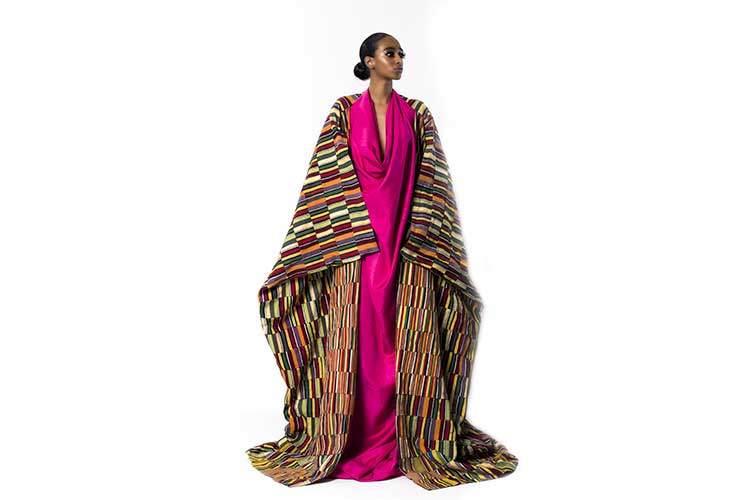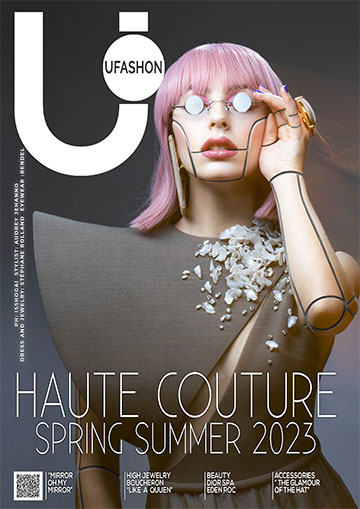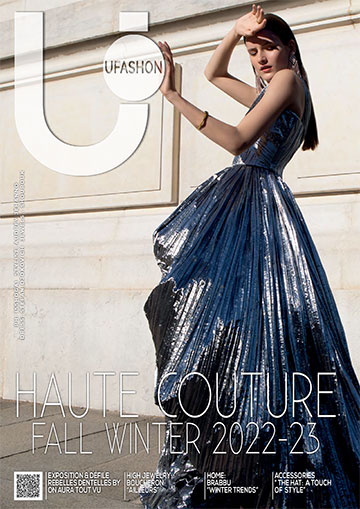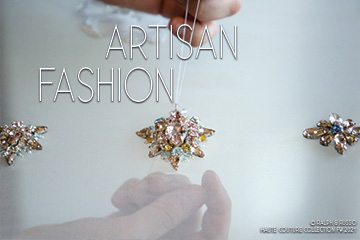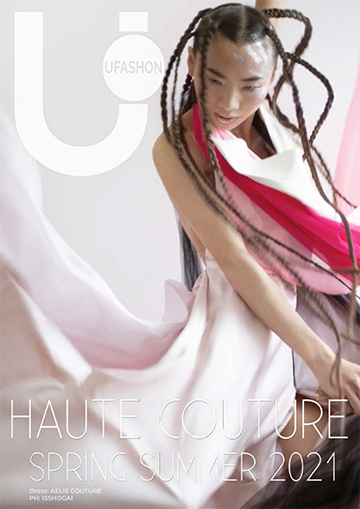"Tseundé" means exchange in the Ewondo language of Cameroon. Exchanges between different cultures and civilizations, different parts of the world, characterize humanity.
 |
At a time when we are precisely deprived of these vital exchanges, if not in a virtual way, Imane Ayissi wanted to continue to explore the relationships between different cultures, especially African cultures and Western cultures as far as fashion and appearance are concerned.
 |
Even if it means plunging back and taking inspiration from an unfortunate period, that of the 18th and 19th century and the intense colonization of the African continent by Europeans, when the Western garment, skillfully cut, buttoned, covering the body entirely, tried to replace the African way, made of draped, sometimes very ornate, symbolic fabrics, but simply rolled up on a free body, which could otherwise be entirely visible. These new constraints, imposed by the colonists and unsuited to the climates, history and sociability of the conquered regions, also generated resistance, clothing mix, and therefore new creativity and new African appearances.
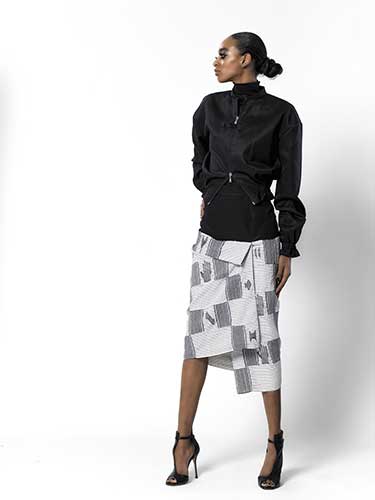 |
But this inspiration also led Imane Ayissi to dream of other more harmonious, more balanced exchanges that could have taken place between these two cultural areas and could have given birth to totally new types of clothing.
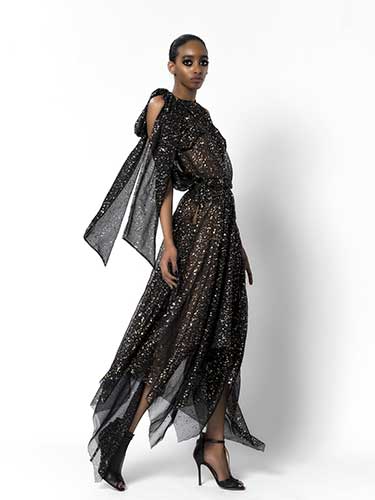 |
This collection is also a reflection on the fashion industry versus the fashion craft industry in the current context. Haute Couture is precisely the perpetuation of a more humane, adaptable craft, respectful of individuality, almost without waste, but which today tends to reserve itself for exceptional, unaffordable, even unwearable garments.
 |
If this collection includes, of course, evening gowns, I also wanted to create a daytime, everyday Couture, where easy and wearable clothes are sublimated by tailor-made, precious materials, perfect manufacturing, and artisanal techniques that make them unique. In particular craft techniques from the African continent, always with precious Kenté from Ghana, woven by hand, but above all batiks from Ghana and Nigeria, called Adire. Using stamps, wax and dye, this technique allows to print textiles with simple but vibrant designs, with a depth that modern printing techniques rarely allow.
Press Contact: Jean-Marc CHAUVE

